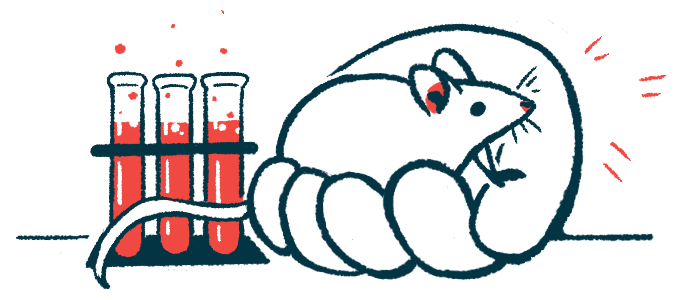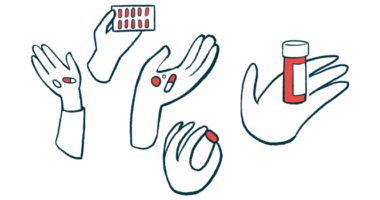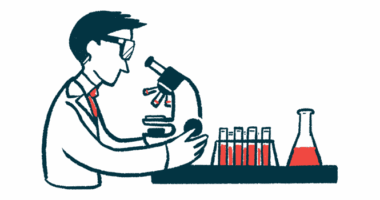Does DMD start in the womb? New research challenges old beliefs.
Findings lend support to potential of new oral therapy from Satellos

New findings from research in mice are challenging longstanding beliefs about the causes of Duchenne muscular dystrophy (DMD), with evidence showing that the genetic disease is marked by abnormalities in muscle stem cells during fetal development — indicating DMD may start in the womb.
According to the researchers, these findings suggest that people with DMD may be born with deficits in their muscles. The work also lends support to the potential of SAT-3247, an experimental oral therapy from Satellos Bioscience that aims to restore the function of muscle stem cells, to treat people with DMD.
“These findings make it abundantly clear that Duchenne begins as a failure of muscle stem cells to build and maintain muscle — without any evidence of [muscle fiber] fragility or damage,” Michael Rudnicki, PhD, coauthor of the new study and cofounder and chief discovery officer at Satellos, said in a company press release. Rudnicki, also a senior scientist at the Ottawa Hospital Research Institute, provided financial support for the study.
In the study, the scientists noted that “[muscle stem cell] dysfunction and aberrant muscle architecture arise in utero,” or in the womb.
Titled “Intrinsic dysfunction in muscle stem cells lacking dystrophin begins during secondary myogenesis,” the study was published in the journal Nature Communications.
DMD is an inherited disorder caused by mutations in the gene that encodes a muscle protein called dystrophin. In mature muscle fibers, dystrophin is known to act like a shock absorber, helping to cushion muscle cells against wear and tear-type damage.
Scientists have long believed that people with DMD are born with healthy muscles, which then accumulate excessive damage over time, leading to disease symptoms.
Problems found in muscle stem cells in mice before birth
These new findings challenge that notion. In the study, scientists from the Research Institute and the University of Ottawa, both in Canada, conducted detailed analyses of muscle cells during prenatal development in a mouse model of DMD.
The team found that the mice showed no problems with primary myogenesis — the process where primordial cells in the newly formed embryo start to take on specific features needed for muscle development. However, the DMD mice exhibited substantial dysregulation of secondary myogenesis, a process in later fetal development in which muscle tissue grows and matures.
This dysregulation in secondary myogenesis led to problems with muscle stem cells, the researchers found. Muscle stem cells are normally responsible for generating new muscle cells, which is crucial for both creating muscle during fetal development and repairing muscle later in life.
In the DMD mice, the ability of muscle stem cells to create new muscle cells was diminished, the researchers found. As a result, the DMD mice had fewer, smaller muscle fibers than typical healthy mice.
“Our findings provide compelling evidence that DMD is an intrinsic [muscle stem cell] disorder characterized by deficits in [muscle stem cell activity] that begin during secondary myogenesis,” the researchers wrote.
Through further experiments, the scientists shed light on some of the molecular mechanisms underlying muscle stem cell dysfunction in DMD.
Our findings provide compelling evidence that DMD is an intrinsic [muscle stem cell] disorder characterized by deficits in [muscle stem cell activity] that begin [in the womb].
When a muscle stem cell activates to form new muscle tissue, it divides into two cells: one that will become a new muscle cell, and another that will remain a muscle stem cell, capable of activating again if needed.
The team found that dystrophin normally interacts with another protein called MARK2, and without this interaction, muscle stem cells cannot correctly carry out this type of uneven division. The scientists further determined that reducing the activity of a different protein, called AAK1, could correct this defect.
“By modulating AAK1, we have demonstrated a powerful means to regulate polarity, normalize stem cell function and enhance muscle formation in dystrophic models, pointing to a compelling path toward regenerative treatment strategies,” Rudnicki said.
SAT-3247 is now being tested in DMD patients
SAT-3247 is an oral inhibitor of AAK1 that’s now in clinical testing. The investigational therapy aims to enhance the activity of muscle stem cells, thereby promoting repair and potentially slowing the progression of DMD.
Data from an early trial that enrolled five adults with DMD showed that the patients’ grip strength nearly doubled after a month on SAT-3247, with no serious safety issues reported.
Frank Gleeson, cofounder and CEO of Satellos, said that findings from the new study “further validate our conviction that correcting stem-cell dysfunction is essential to changing the trajectory of Duchenne.”








